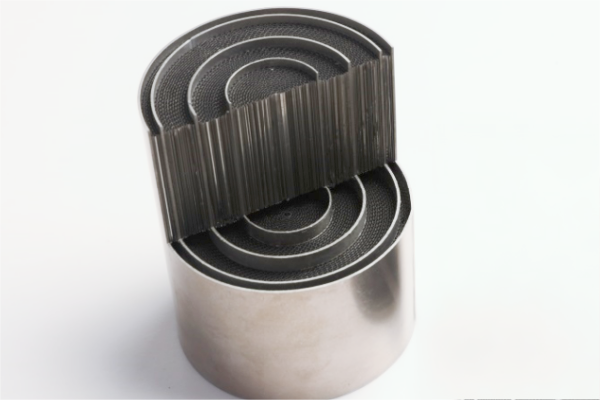To be a valuable global supplier
for metallic honeycombs and turbine parts
Release time:2025-08-18
Okay, let’s talk exhaust substrates. Remember how ceramic honeycombs were the go-to for years? Decent surface area, handled heat okay... until they didn’t. That brittleness bit us hard, especially on heavy rigs bouncing down mine sites or construction zones. Cracked monoliths meant warranty claims and angry customers. We needed something tougher Metal Honeycomb Substrate for diesel engine.

Honestly, the switch wasn’t about chasing something shiny; it was solving real field failures. The big win? Ductility. Metal bends and absorbs shock; it doesn’t shatter like ceramic. That alone made metal honeycomb substrate for diesel engine a no-brainer for anything off-highway or high-vibration. Downtime costs way more than the substrate.
But it wasn’t just about toughness. Ceramics locked us into simple shapes – mostly hexagons. Manufacturing constraints, you know? With metal honeycomb substrate for diesel engine, we finally got design freedom. Think wavy channels (sinusoidal) instead of straight walls. Sounds small? It’s huge. Creates way more turbulence, smashes gas into the catalyst coating harder. Result? We’re seeing 12-18% less backpressure clogging up the engine, and crucially, better NOx conversion when the exhaust is still cold – right when the damn regulations measure it hardest.
Yeah, but what about the trade-offs? Metal expands more when it heats up. Early versions warped or stressed mounts. Lesson learned: you can’t just drop it in like ceramic. Needed smarter mounting – some spring-loaded designs, maybe sliding interfaces – to let it breathe during those wild 200°C to 800°C regen cycles. Modern alloys (that FeCrAl stuff) handle the heat cycling much better now too.
Surface area? Raw metal sucks for holding catalyst washcoat. No argument. But here’s the trick: metal honeycomb substrate for diesel engine is just the skeleton. The magic is the coating. New nano-coating tech is wild. We’re building up crazy porous layers on the metal – think microscopic coral reefs. This bumps the effective surface area way past what basic ceramics offer, easily over 50 m²/g. Bonus? We use way less platinum group metals. With prices where they are, that’s pure margin.
Mechanics? Metal wins hands down for anything not pure axial crush. Side loads, vibrations, the odd rock strike? Metal shrugs it off. Ceramic cracks. End of story. Manufacturing’s also getting slicker – better ways to bond those foils, tighter cell control (think 300-400 cells per square inch).
Heat Management
That thermal expansion? We tamed it. Now we’re using metal’s conductivity. Stick some electrodes on it, and you can zap the metal honeycomb substrate for diesel engine to glow red-hot in seconds. Zero cold-start emissions? That’s the holy grail for Euro 7 / US 2027. Hybrids especially need this – their engines start cold way too often.
Smarter Coatings
It’s not just about more surface. We’re layering coatings – maybe a base layer for adhesion, then a super-porous one for area, then the precious metals exactly where we need them. Less waste, better performance.
Hybrid Plays
Some folks are sticking ceramic functional layers onto metal cores. Best of both worlds? Maybe. Tricky to manufacture reliably, but the lab results look promising for extreme temp stability.
Cost Down
Ceramic still has a cost edge from decades of volume. But new powder metallurgy routes and faster foil processing are chipping away at the metal honeycomb substrate for diesel engine price premium. Should close the gap significantly soon.
We didn’t switch to Metal Honeycomb Substrate for diesel engine because it was perfect. We switched because ceramic broke too often and limited our designs. Metal Honeycomb Substrate for diesel engine the durability crisis and gave us tools to hit insane new emissions targets. It’s the rugged, adaptable backbone modern diesel aftertreatment needed. As regs get tighter and packaging gets smaller, betting on metal seems like the only way to keep diesel viable.